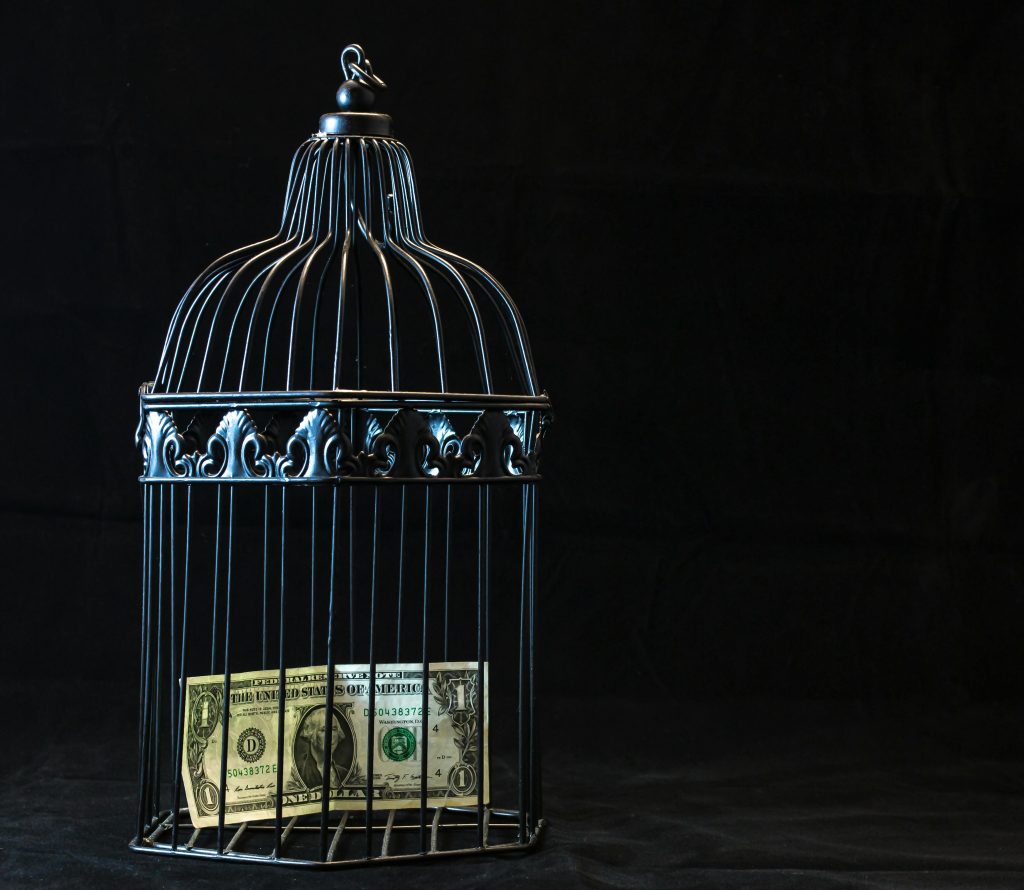Introduction
If you earn a consistent salary, budgeting is straightforward: set your fixed expenses, allocate for savings, and plan for discretionary spending. But when your income fluctuates—whether you’re a freelancer, gig worker, commission‐based salesperson, or seasonal employee—sticking to a traditional budget can feel impossible. The key is creating a flexible framework that adapts to irregular paychecks while still covering essentials and building financial stability. In this post, we’ll explore step‐by‐step strategies to track variable income, establish a baseline budget, prioritize needs, and build buffers so you remain in control even when earnings spike or dip.
1. Understand and Track Your Variable Income
1.1 Gather Historical Income Data
- Review Past 6–12 Months
- Collect bank statements, invoices, or pay stubs to see how much you’ve actually earned each month for the last year.
- Note peaks (months with high revenue) and valleys (slow periods).
- Calculate Your Average Monthly Income
- Sum all earnings over 12 months, then divide by 12. This gives a baseline average, not a guaranteed amount, but helps guide your budgeting.
- Example: If your total earnings over the year were $60,000, your average monthly income is $5,000.

1.2 Identify Income Patterns
- Seasonality: Do certain months (e.g., December for retail or June–August for event planners) reliably bring in more?
- Client or Commission Cycles: Are you paid only when a sale closes—or on net‐30 billing terms—creating lags in cash flow?
- One‐Off Projects: Distinguish between recurring work and one‐time gigs to avoid assuming temporary spikes will continue.
2. Establish a “Base” Budget for Essentials
2.1 List Fixed and Essential Expenses
- Fixed Expenses (must‐pay each month—rent/mortgage, utilities, insurance, minimum debt payments).
- Essential Variable Expenses (groceries, transportation, basic healthcare, minimum phone/internet).
2.2 Calculate Your “Bare‐Bones” Minimum
- Total Your Fixed + Essential Costs
- For example, if rent is $1,200, utilities $200, insurance $150, groceries $300, and transport $150, your monthly essentials total $2,000.
- Use Your Lowest‐Income Month as a Test
- If your lowest month last year was $3,000, covering $2,000 of essentials leaves $1,000 for discretionary, savings, or debt. Knowing the bare minimum ensures you can meet non‐negotiable bills even in a lean month.
2.3 Build a “Stability Fund” First
- Target 1–2 Months of Essentials
- Before funding a full emergency fund, accumulate enough cash to cover one or two months of those $2,000 bare‐bones expenses.
- This “stability fund” guards against a month when you earn less than average and prevents last‐minute scrambling.
3. Implement a Percentage‐Based Budgeting Approach
3.1 Allocate by Percentages Instead of Fixed Dollars
When dollars vary, use percentages of whatever you earn to determine how much goes to each category. A common template might be:
- 50% Needs: Essentials (housing, utilities, groceries, transportation).
- 30% Savings & Debt Repayment: Emergency fund, retirement, investing, or paying down loans above minimum.
- 20% Wants: Dining out, entertainment, non‐essential shopping.
Adjust these percentages based on your goals and income volatility:
- High Variability / Low Cash Buffer: You might shift to 60/20/20 or even 70/15/15 until the stability fund grows.
- Strong Buffer Build‐Up: Once you consistently cover essentials and have three months of stability fund, aim to move closer to 50/30/20.

3.2 Calculate Monthly Allocations After Each Paycheck
- Example: If you earn $4,000 one month:
- Needs (50%): $2,000
- Savings/Debt (30%): $1,200
- Wants (20%): $800
- Adjust When Income Drops: If next month you earn $2,500:
- Needs (50%): $1,250
- Savings/Debt (30%): $750
- Wants (20%): $500
Reducing “Wants” is the first lever; if income falls below your bare‐bones level, temporarily reallocate part of “Wants” or “Savings” to cover essentials, rather than missing a rent payment.
4. Build and Maintain a Buffer Through Sinking Funds
4.1 Create Sinking Funds for Irregular Expenses
- Identify Annual or Quarterly Costs (e.g., property taxes, insurance premiums, vehicle registration).
- Divide by 12 (or 4) for Monthly Contributions
- If insurance is $600/year, set aside $50 each month.
- Store these funds in a separate high‐yield savings account to avoid mixing with checking.
4.2 Grow Your Emergency Fund Gradually
- Aim for 3–6 Months of Bare‐Bones Expenses: That $2,000 minimum × 3 = $6,000.
- Automate Savings Whenever Possible
- When a high‐income month occurs, funnel a larger portion (e.g., 50% of any amount above your average) into the emergency fund.
- Use the Fund Strategically
- Only tap it if a month’s income falls below your bare‐bones threshold. Then, replenish as soon as your earnings rebound.
5. Prioritize Variable Income Obligations
5.1 Rank Expenses by Vitality
- Tier 1: Must‐Cover Essentials
- Housing, utilities, food, healthcare, debt minimums.
- Tier 2: High‐Priority Financial Goals
- Retirement contributions (if you can’t miss employer match), debt paydown beyond minimum, building your buffer.
- Tier 3: Discretionary Spending
- Dining out, vacations, entertainment, subscriptions.
If income is low, focus on Tier 1. If it’s moderate (just above bare minimum), cover Tier 2 after essentials. When income is high, you can reward yourself with more Tier 3 spending.
5.2 Adjust Subscriptions and Recurring Charges
- Review Quarterly: Identify subscription services you rarely use (streaming, gym, software). Pause or downgrade on lean months.
- Seasonal Subscriptions: If a service is only relevant part of the year (tax filing software, holiday memberships), cancel when not in use to reduce fixed outgoing.
6. Adopt Flexible Saving and Spending Rules
6.1 Use “Rule of Thumb” Buffers
- 30% Cushion: Some freelancers set aside 30% of every payment for taxes, irregular expenses, and buffer.
- Rainy Day Fund Accounts: Maintain a small “rainy day” checking account equal to one month of expenses specifically for lean pay periods. Replenish whenever you exceed a net‐positive month.

6.2 Scale Discretionary Spending to Income
- “If I Earn X, I Can Spend Y” Model:
- If you anticipate $3,000 this month, permit yourself up to $300 of non‐essentials (10%). If you make $5,000, non‐essentials could be $500–$800 (10–16%).
- Avoid Absolute Limits: A fixed $500 “fun money” rule breaks when income falls below $3,000. Percentages adjust naturally.
7. Review and Reforecast Regularly
7.1 Monthly Budget Check‐Ins
- Compare Projected vs. Actual Income: Post every month or biweekly, reconcile your expected earnings with what arrived.
- Adjust Next Month’s Plan: If you earned 20% less, trim Tier 3 spending proportionally. If you earned 30% more, consider allocating the surplus to savings or paying down high‐interest debt.
7.2 Quarterly Financial Health Review
- Evaluate Buffers and Sinking Funds: Are you on track to reach your 3‐month bare‐bones emergency goal? Adjust contributions if needed.
- Analyze Income Trends: Is your average increasing, decreasing, or volatile? Use that insight to recalibrate your average income and bare‐bones calculation.
8. Tips for Long‐Term Stability with Variable Income
- Diversify Your Income Streams
- If you rely on a single client or gig, seek additional clients, part‐time work, or passive income (investments, rental property) to reduce risk.
- Negotiate Payment Terms
- Where possible, request more predictable payment schedules (e.g., 50% upfront retainer, net‐15 billing) to smooth cash flow.
- Invoice Promptly and Follow Up
- Faster invoicing and polite reminders shorten the time between work and payment, reducing month‐to‐month swings.
- Consider a “Paycheck” Account
- Transfer a consistent amount into a separate account each month based on your 12‐month average, paying yourself a stable “salary” and treating the rest as variable bonus. This simulates a steady wage despite fluctuating revenues.

Conclusion
Budgeting on an unstable income requires discipline, creativity, and frequent course corrections. By calculating a bare‐bones cost of living, adopting percentage‐based allocations, building sinking funds and emergency savings, and scaling discretionary spending to match actual earnings, you can confidently navigate lean months without jeopardizing essentials or long‐term goals. Regular reviews of income, expenses, and buffers ensure you stay on track even as your revenue fluctuates. Over time, these practices transform financial uncertainty into manageable variation—letting you focus on growing your income rather than fearing its ups and downs.



